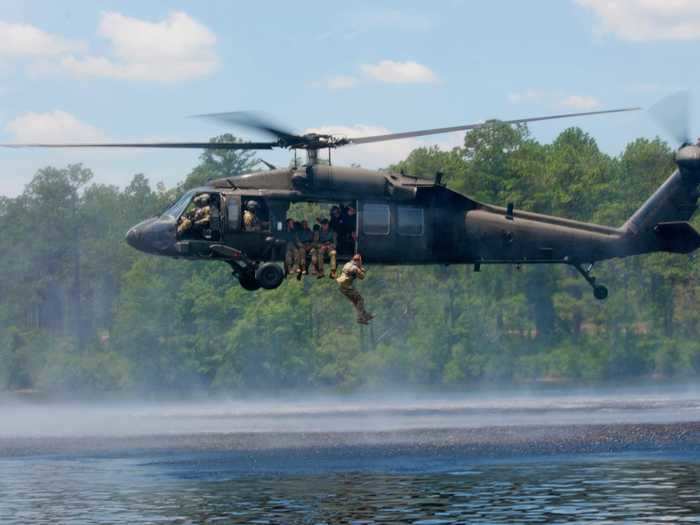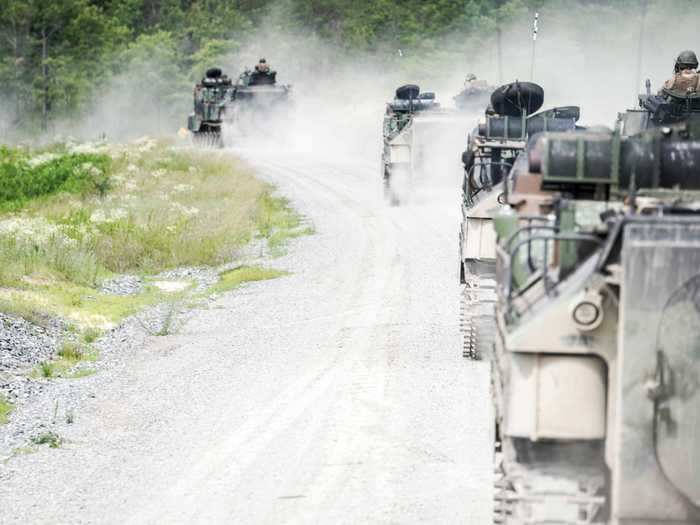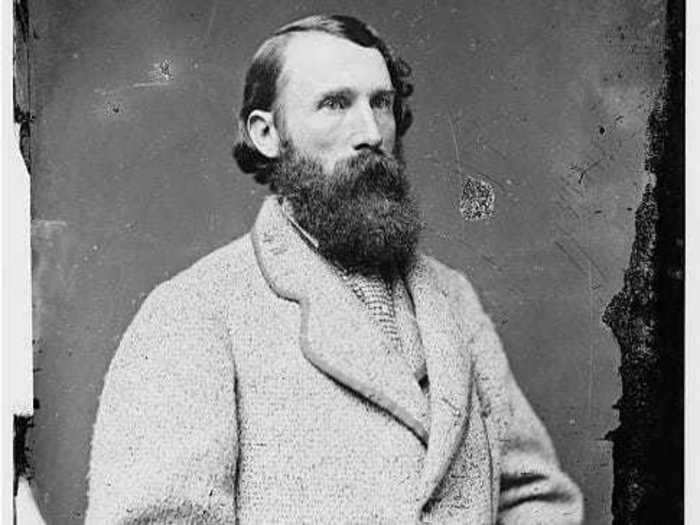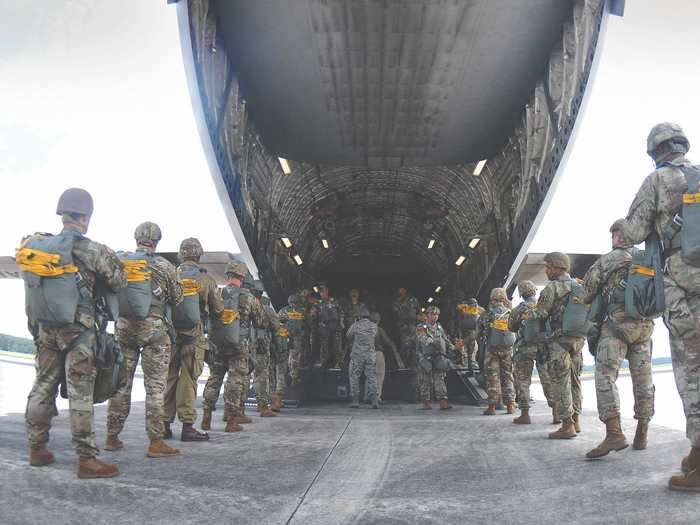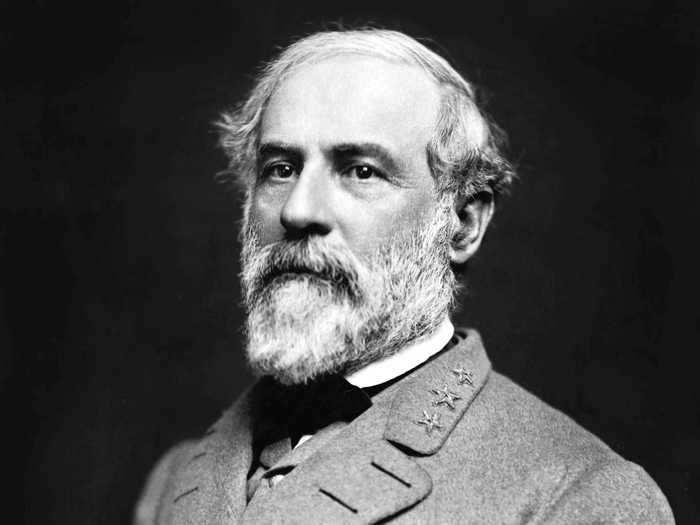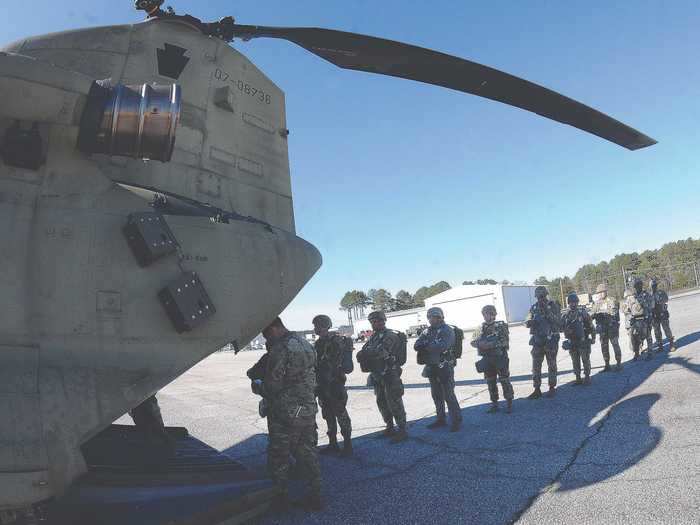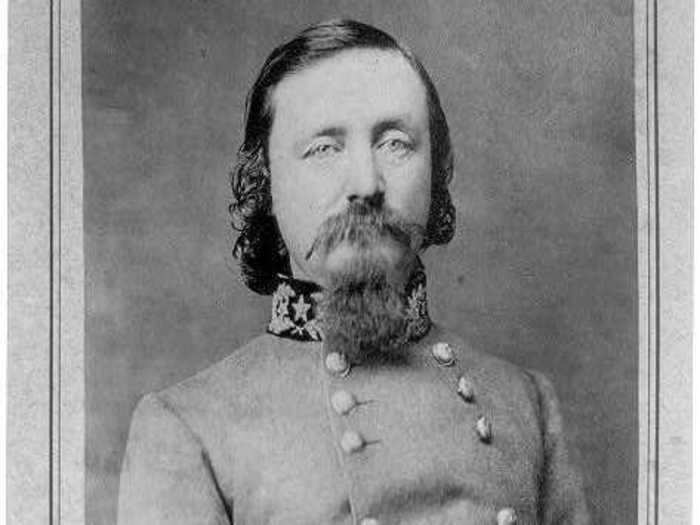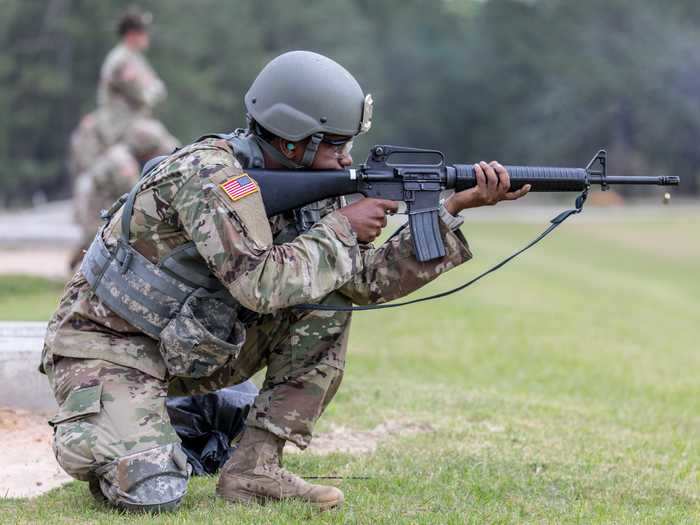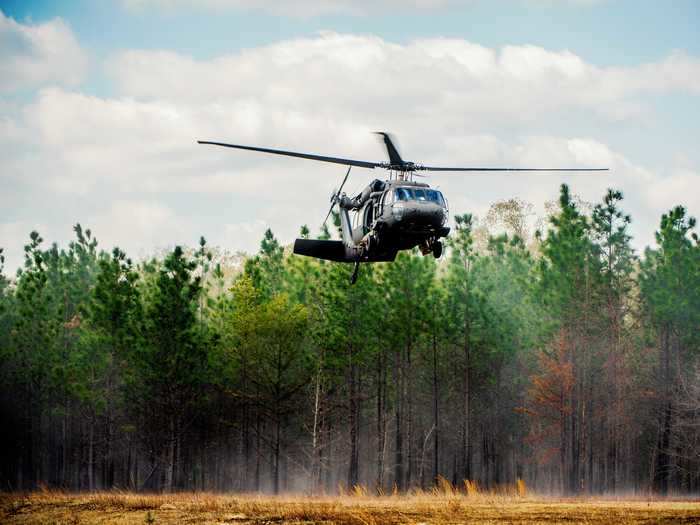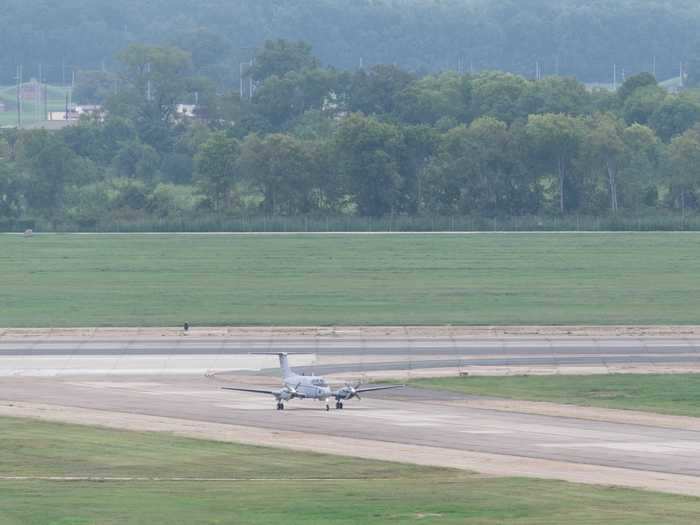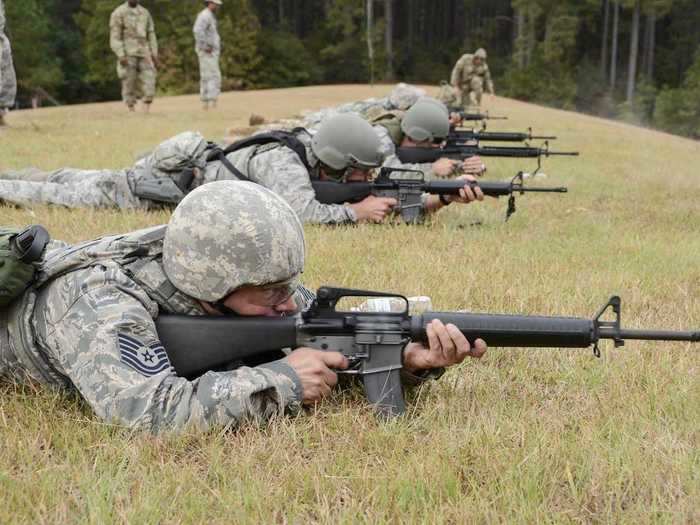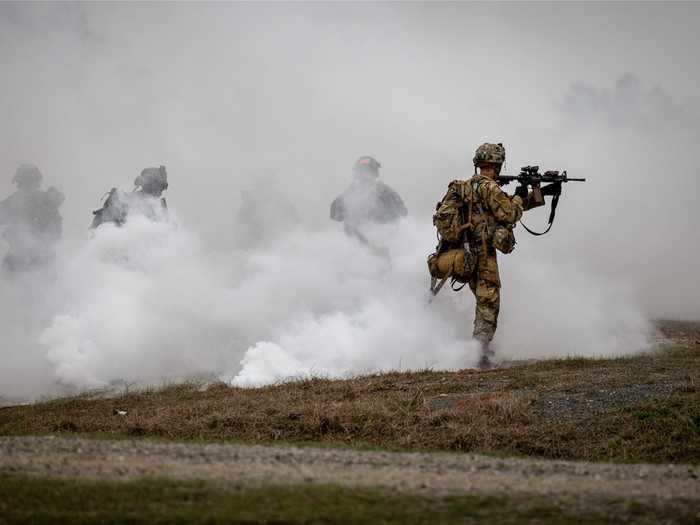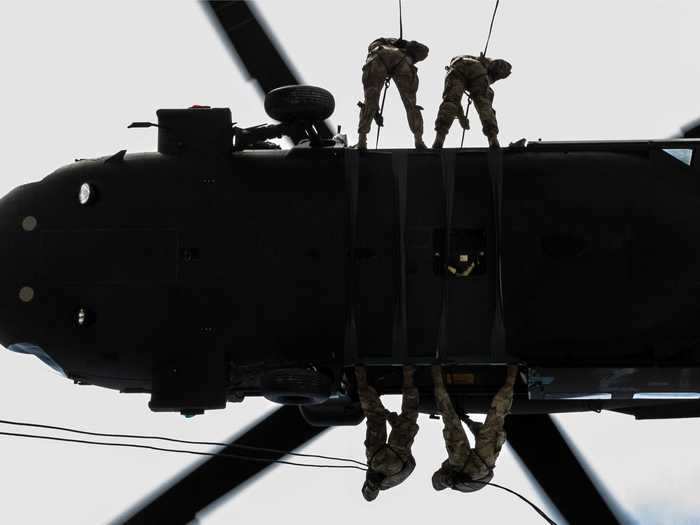The XVIII Airborne Corps Headquarters sign at Fort Bragg, North Carolina, June 28, 2019.Pfc. Joshua Cowden / 22nd Mobile Public Affairs Detachment /DVIDS
- The US Army is taking a hard look at renaming its military bases that honor leaders of the Confederate Army, whose battle flag persists as a symbol of racism.
- A group of 11 states, known as the Confederate States of America, seceded from the United States in the 1860s to continue enslaving millions of African Americans.
- Over a half a million people died during the US Civil War.
The US Army is considering renaming nearly a dozen military bases that reference senior military leaders from the Confederate Army, as other service branches have issued directives banning Confederate Army symbols on their bases.
Defense Secretary Mark Esper and Army Secretary Ryan McCarthy announced that they are willing to discuss the renaming of the bases on a "bipartisan" basis, a US Army spokesperson said in a statement.
The Army previously said to military news organization Task & Purpose that it had no plans to "rename any street or installation," and that the namings were "done in a spirit of reconciliation, not to demonstrate support for any particular cause or ideology."
"The Army has a tradition of naming installations and streets after historical figures of military significance, including former Union and Confederate general officers," an Army spokesperson said to Task & Purpose in February.
The change in posture comes as the country grapples with racial tensions following the death of George Floyd, a Black man who died during his arrest in Minneapolis, Minnesota, on May 25.
The US Marine Corps last week officially banned displaying the Confederate flag on its bases, and on Tuesday, Chief of Naval Operations Adm. Mike Gilday announced the service would also ban the flag's imagery.
"The Confederate battle flag has all too often been co-opted by violent extremist and racist groups whose divisive beliefs have no place in our Corps," the Marine Corps said in a statement. "Our history as a nation, and events like the violence in Charlottesville in 2017, highlight the divisiveness the use of the Confederate battle flag has had on our society."
"The order is meant to ensure unit cohesion, preserve good order and discipline, and uphold the Navy's core values of honor, courage and commitment," US Navy spokesman Cmdr. Nate Christensen said a separate statement.
US Army Gen. Mark Milley, the chairman of the Joint Chiefs of Staff, also supported the Army's discussion on the issue, CNN reported Tuesday.
Here are the 10 US military bases still named after Confederate leaders:
Fort Bragg in Fayetteville, North Carolina, is named for Confederate Gen. Braxton Bragg.
US Army Reserve soldiers jump out of a UH-60 Blackhawk, while fellow soldiers swim to shore at Mott Lake at Fort Bragg, North Carolina, June 27, 2019.
Staff Sgt. Aaron Rognstad / US Army Reserve / DVIDS
Fort Bragg is home to the US Army's Airborne and Special Operations Forces. Established in 1918 as Camp Bragg, the base is one of the largest military installations in the world and employs about 57,000 military personnel, according to the Army.
Fort Bragg is named after Braxton Bragg, a Confederate general and West Point graduate who was born in Warrenton, North Carolina. The Army's history of the base doesn't mention Bragg's Confederate ties, saying instead that the base bears his name because of his success in the Mexican-American War that began in 1846.
According to the National Park Service, Bragg had resigned from the Army and "was overseeing his Louisiana plantation when the [Civil] war began."
Bragg was appointed a brigadier general in 1861, commanding defenses from Pensacola, Florida, to Mobile, Alabama. He later commanded the Army of Tennessee, and after a series of defeats, went to Richmond to advise Confederate President Jefferson Davis. He died in 1876.
Fort A.P. Hill is named for Ambrose Powell Hill, who was killed in the Civil War.
US Marines with 1st Battalion, 25th Marine Regiment, 4th Marine Division, head toward shooting point 26 aboard their Amphibious Assault Vehicles during a live fire exercise at Ft.. A.P. Hill, Virginia, June 18, 2019.
Sgt. Markeith Hall / US Marine Corps / DVIDS
Fort A.P. Hill, located near Bowling Green, Virginia, was established June 11, 1941 as a training installation, a role it still serves today. The Army estimates that 80,000 troops from all branches of the military trained here each year during the War on Terror.
It also hosted the Boy Scout Jamboree every four years from 1981 to 2005, and in 2010.
The Army calls A.P., short for Ambrose Powell, Hill a "distinguished" Confederate general, and notes that John Wilkes Booth was killed nearby.
A.P. Hill served in the Confederate army.
Ambrose Powell Hill was a Lieutenant General in the Confederate Army.
Library of Congress
Hill was born in Culpeper, Virginia, and was a graduate of the US Military Academy at West Point. He died in 1865 at the Third Battle of Petersburg, according to Military.com.
Fort Lee is named for Gen. Robert E. Lee, the infamous Confederate commander.
Paratroopers file onto a C-17 aircraft for an airborne operation over Blackstone Army Airfield.
Terrance Bell / US Army Garrison Fort Lee Public Affairs
Fort Lee, in Prince George County, Virginia, is named for Robert E. Lee, the Virginia commander who was a slave owner.
Fort Lee was established as Camp Lee in 1917, but the original site was dismantled after the end of World War I. It was re-established during World War II and in 1950, was formally renamed Fort Lee.
Ft. Lee is now the Army's third-largest training site.
Robert E. Lee was one of the Confederacy's most famous figures. He surrendered to General Ulysses S. Grant in 1865, ending the Civil War.
Commander Robert E. Lee.
The Library of Congress
The commander of the Confederate States Army, Lee surrendered on April 9, 1865. He was a cruel slave master — breaking up slave families, ordering runaway slaves to be mercilessly whipped, and captured and enslaved free Black people when his army fought in Pennsylvania, according to The Atlantic.
Fort Pickett is named for Maj. Gen. George Pickett, who led an eponymous, ill-fated charge in the Battle of Gettysburg.
Parachutists line up for their flight on a Chinook helicopter at Blackstone Army Airfield.
Terrance Bell / US Army Garrison Fort Lee Public Affairs / DVIDS
Fort Pickett is a Virginia National Guard installation near Blackstone, Virginia.
It was established as Camp Pickett on July 3, 1942 at 3:00 PM — 79 years to the hour after Maj. Gen. George E. Pickett began his charge at the Battle of Gettysburg, according to the Virginia National Guard.
Maj. Gen. George Pickett left the US Army to join the Confederate Army in 1861.
Maj. Gen. George E. Pickett.
Library of Congress
Pickett graduated last in his class from West Point in 1846. He lost more than half his command during the charge up Cemetery Ridge during the Battle of Gettysburg in 1863, according to the National Parks Service.
Fort Gordon is home to the US Army Cyber Corps and Signal Corps.
A US Army soldier at Fort Gordon, Georgia, April 19, 2019.
Staff Sgt. Leron Richards / U.S. Army Reserve / DVIDS
Fort Benning, also in Georgia, is named for Brig. Gen. Henry Benning, who was born in Georgia.
Brig. Gen. Henry Benning was "an outstanding lawyer-turned-soldier from Columbus," and the base honoring him was originally founded October 7, 1918, according to the Army.
Fort Rucker is named after Col. Edmund Rucker.
A C-12 Huron, from Ft. Rucker, Alabama, arrives on the flight line at Barksdale Air Force Base, Louisiana, September 12, 2018.
Airman 1st Class Lillian Miller / US Air Force / DVIDS
Fort Rucker, an Army Aviation training base in Alabama, was established May 1, 1942. Edmund Rucker was a Confederate colonel and became an industrial leader in the state after the war. German and Italian prisoners of war were held nearby during World War II, according to the Army.
Louisiana's Camp Beauregard is named for Gen. Pierre Gustave Toutant Beauregard.
National Guard Airmen and soldiers at Camp Beauregard in Pineville, Louisiana, October 19, 2017.
Sgt. Noshoba Davis / US Army National Guard / DVIDS
Louisiana's Fort Polk is named for Lt. Gen. Leonidas Polk.
US Army soldiers of the 101st Airborne Division (Air Assault), during a live fire exercise at Ft. Polk, Louisiana, March 11, 2019.
Capt. Justin Wright / US Army / DVIDS
Fort Hood is named for Confederate Gen. John Bell Hood.
Students at Ft. Hood Air Assault school conduct rappel operations.
Sgt. Gregory Hunter / 7th Mobile Public Affairs Detachment / DVIDS
Fort Hood opened in 1942 and is now the largest active-duty armored post in the US military, according to the Army.
The fort is named for John Bell Hood, a West Point graduate.

